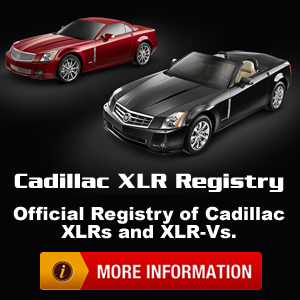Cadillac Tech
Seasoned Member
Engine Mechanical - 4.4L | Description and Operation | Document ID: 1762299 <HR>
Supercharger Description and Operation
Description
The LC3 supercharger is a positive displacement pump that consists of 2 counter-rotating rotors, an inlet port and an outlet port, and an air bypass valve that is built into a housing. The rotors are designed with 3 lobes and a helical twist. An air bypass valve is built into the housing. The rotors in the supercharger are designed to run at a minimal clearance, not in contact with each other or the housing and are timed to each other by a pair of precision spur gears which are pressed onto the rotor shafts. The front ends of the rotors are held in position by deep-groove ball bearings, while the rear ends of the rotors are supported by sealed roller bearings.
The gears and ball bearings are lubricated by a synthetic oil. The oil reservoir is self-contained in the supercharger, isolated from the engine oil, sealed for the life of the unit and is not serviceable.
The cover on the supercharger contains the input shaft which is supported by 2 deep-groove ball bearings, and is coupled to the rotor drive gears. The pulley is pressed onto the input shaft and is not serviceable. The bearings are lubricated by the synthetic oil contained in the same reservoir.
Operation
The supercharger is designed to increase the air pressure and density in the intake manifold. When this air is mixed with the correct amount of fuel the result is more power from the engine. This excess air creates a boost pressure in the intake manifold with a maximum engine boost of 83 kPa (12 psi). Because the supercharger is a positive displacement pump and is directly driven from the engine drive belt system, boost pressure is available at all driving conditions.
When boost is not required, such as during idle or light throttle cruising, the excess air is routed through the bypass passage between the intake manifold and the supercharger inlet. This bypass circuit is regulated by a bypass valve which is similar to a throttle plate. The bypass valve is controlled by a vacuum actuator which is connected to the vacuum signal between the throttle and the supercharger inlet. Spring force from the actuator holds the valve in a normally closed position to create boost, and vacuum pulls the valve open when the throttle closes to decrease boost.
A solenoid valve is attached to the supercharger housing. This three-way valve, controlled by the engine control module (ECM), determines whether pressure from the manifold is routed to the bypass actuator or closed off. This valve allows pressure from the manifold to open the bypass valve and lower boost pressure during specific driving conditions. The open bypass valve reduces the pumping effort of the supercharger, thereby increasing the fuel efficiency in light load operations.
Intercooler
The supercharger has an integrated intercooler. Cooling the air enhances the effectiveness of the supercharger. The intercooler uses conventional coolant in a separate sealed system from the engine cooling system. The intercooler system has a radiator, a back fill port at the rear of the supercharger, attaching hoses, and a pump capable of a flow rate of 22 liters (6 gallons) per minute. The pump is commanded ON, by the control module, whenever the engine is running, intake air temperature (IAT) sensor 2 is more than 0°C (32°F), intake air temperature (IAT) sensor is more than -25°C (-13°F), and engine run time is more than 10 seconds.
Supercharger Description and Operation
Description
The LC3 supercharger is a positive displacement pump that consists of 2 counter-rotating rotors, an inlet port and an outlet port, and an air bypass valve that is built into a housing. The rotors are designed with 3 lobes and a helical twist. An air bypass valve is built into the housing. The rotors in the supercharger are designed to run at a minimal clearance, not in contact with each other or the housing and are timed to each other by a pair of precision spur gears which are pressed onto the rotor shafts. The front ends of the rotors are held in position by deep-groove ball bearings, while the rear ends of the rotors are supported by sealed roller bearings.
The gears and ball bearings are lubricated by a synthetic oil. The oil reservoir is self-contained in the supercharger, isolated from the engine oil, sealed for the life of the unit and is not serviceable.
The cover on the supercharger contains the input shaft which is supported by 2 deep-groove ball bearings, and is coupled to the rotor drive gears. The pulley is pressed onto the input shaft and is not serviceable. The bearings are lubricated by the synthetic oil contained in the same reservoir.
Operation
The supercharger is designed to increase the air pressure and density in the intake manifold. When this air is mixed with the correct amount of fuel the result is more power from the engine. This excess air creates a boost pressure in the intake manifold with a maximum engine boost of 83 kPa (12 psi). Because the supercharger is a positive displacement pump and is directly driven from the engine drive belt system, boost pressure is available at all driving conditions.
When boost is not required, such as during idle or light throttle cruising, the excess air is routed through the bypass passage between the intake manifold and the supercharger inlet. This bypass circuit is regulated by a bypass valve which is similar to a throttle plate. The bypass valve is controlled by a vacuum actuator which is connected to the vacuum signal between the throttle and the supercharger inlet. Spring force from the actuator holds the valve in a normally closed position to create boost, and vacuum pulls the valve open when the throttle closes to decrease boost.
A solenoid valve is attached to the supercharger housing. This three-way valve, controlled by the engine control module (ECM), determines whether pressure from the manifold is routed to the bypass actuator or closed off. This valve allows pressure from the manifold to open the bypass valve and lower boost pressure during specific driving conditions. The open bypass valve reduces the pumping effort of the supercharger, thereby increasing the fuel efficiency in light load operations.
Intercooler
The supercharger has an integrated intercooler. Cooling the air enhances the effectiveness of the supercharger. The intercooler uses conventional coolant in a separate sealed system from the engine cooling system. The intercooler system has a radiator, a back fill port at the rear of the supercharger, attaching hoses, and a pump capable of a flow rate of 22 liters (6 gallons) per minute. The pump is commanded ON, by the control module, whenever the engine is running, intake air temperature (IAT) sensor 2 is more than 0°C (32°F), intake air temperature (IAT) sensor is more than -25°C (-13°F), and engine run time is more than 10 seconds.




